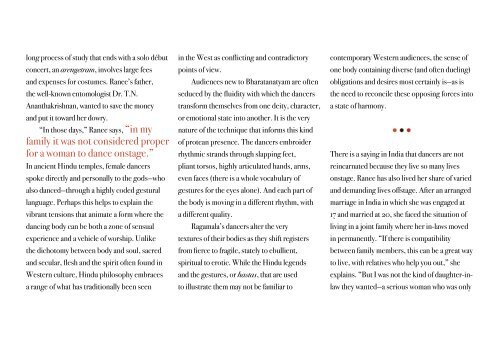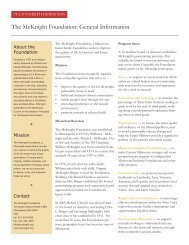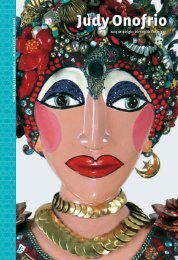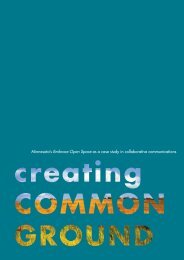PDF, 5 MB - McKnight Foundation
PDF, 5 MB - McKnight Foundation
PDF, 5 MB - McKnight Foundation
Create successful ePaper yourself
Turn your PDF publications into a flip-book with our unique Google optimized e-Paper software.
long process of study that ends with a solo début<br />
concert, an arengetram, involves large fees<br />
and expenses for costumes. Ranee’s father,<br />
the well-known entomologist Dr. T.N.<br />
Ananthakrishnan, wanted to save the money<br />
and put it toward her dowry.<br />
“In those days,” Ranee says, “in my<br />
family it was not considered proper<br />
for a woman to dance onstage.”<br />
In ancient Hindu temples, female dancers<br />
spoke directly and personally to the gods—who<br />
also danced—through a highly coded gestural<br />
language. Perhaps this helps to explain the<br />
vibrant tensions that animate a form where the<br />
dancing body can be both a zone of sensual<br />
experience and a vehicle of worship. Unlike<br />
the dichotomy between body and soul, sacred<br />
and secular, flesh and the spirit often found in<br />
Western culture, Hindu philosophy embraces<br />
a range of what has traditionally been seen<br />
in the West as conflicting and contradictory<br />
points of view.<br />
Audiences new to Bharatanatyam are often<br />
seduced by the fluidity with which the dancers<br />
transform themselves from one deity, character,<br />
or emotional state into another. It is the very<br />
nature of the technique that informs this kind<br />
of protean presence. The dancers embroider<br />
rhythmic strands through slapping feet,<br />
pliant torsos, highly articulated hands, arms,<br />
even faces (there is a whole vocabulary of<br />
gestures for the eyes alone). And each part of<br />
the body is moving in a different rhythm, with<br />
a different quality.<br />
Ragamala’s dancers alter the very<br />
textures of their bodies as they shift registers<br />
from fierce to fragile, stately to ebullient,<br />
spiritual to erotic. While the Hindu legends<br />
and the gestures, or hastas, that are used<br />
to illustrate them may not be familiar to<br />
contemporary Western audiences, the sense of<br />
one body containing diverse (and often dueling)<br />
obligations and desires most certainly is—as is<br />
the need to reconcile these opposing forces into<br />
a state of harmony.<br />
T T T<br />
There is a saying in India that dancers are not<br />
reincarnated because they live so many lives<br />
onstage. Ranee has also lived her share of varied<br />
and demanding lives offstage. After an arranged<br />
marriage in India in which she was engaged at<br />
17 and married at 20, she faced the situation of<br />
living in a joint family where her in-laws moved<br />
in permanently. “If there is compatibility<br />
between family members, this can be a great way<br />
to live, with relatives who help you out,” she<br />
explains. “But I was not the kind of daughter-inlaw<br />
they wanted—a serious woman who was only
















